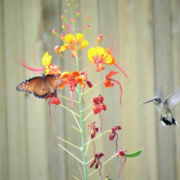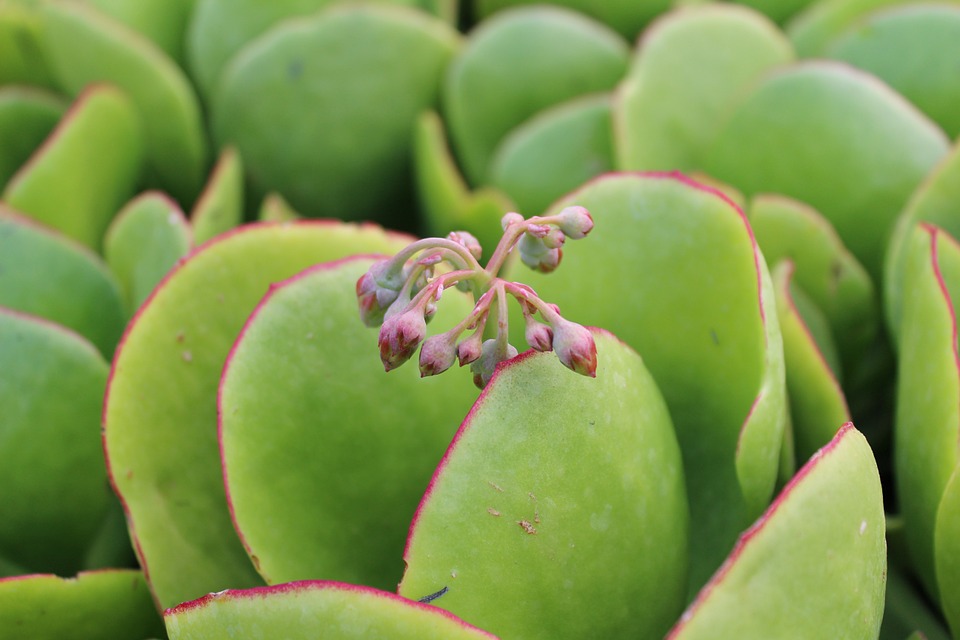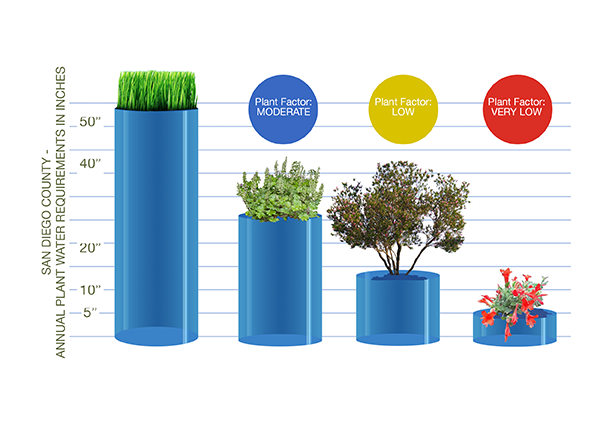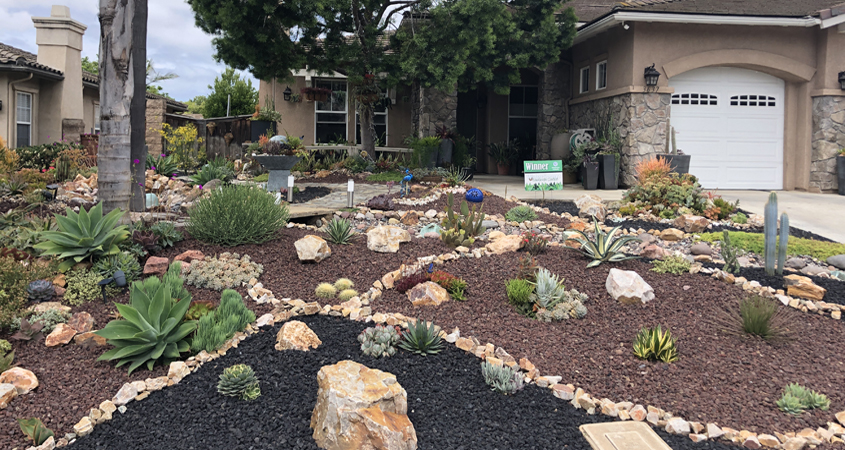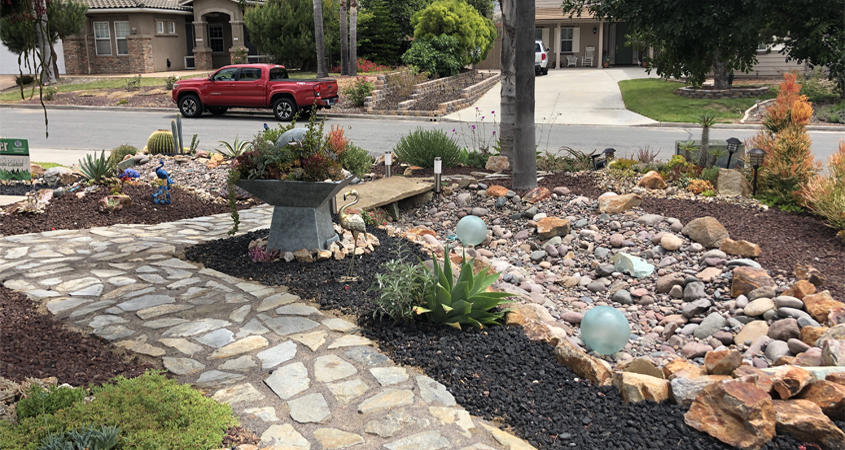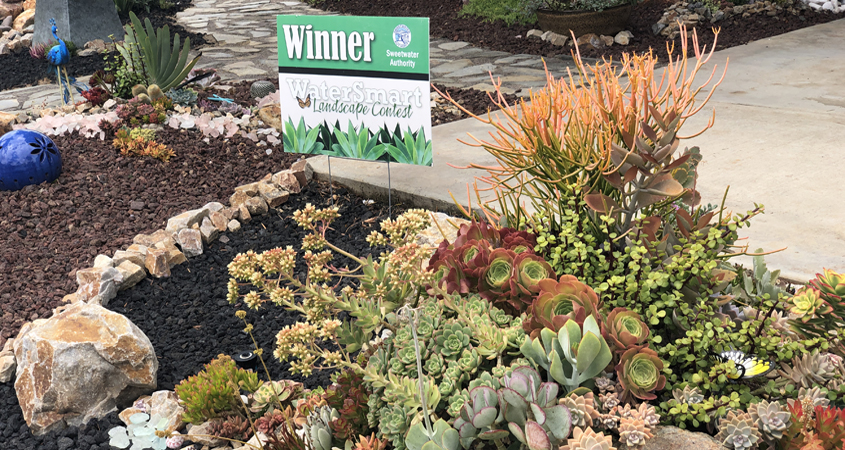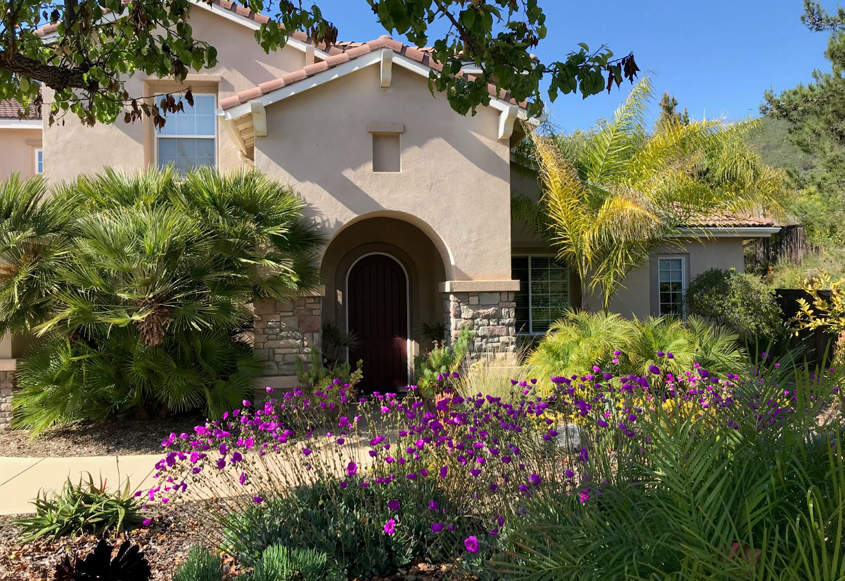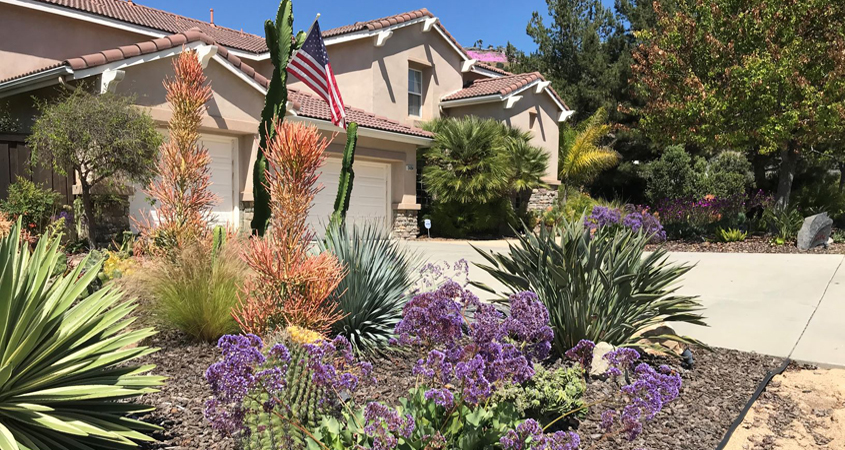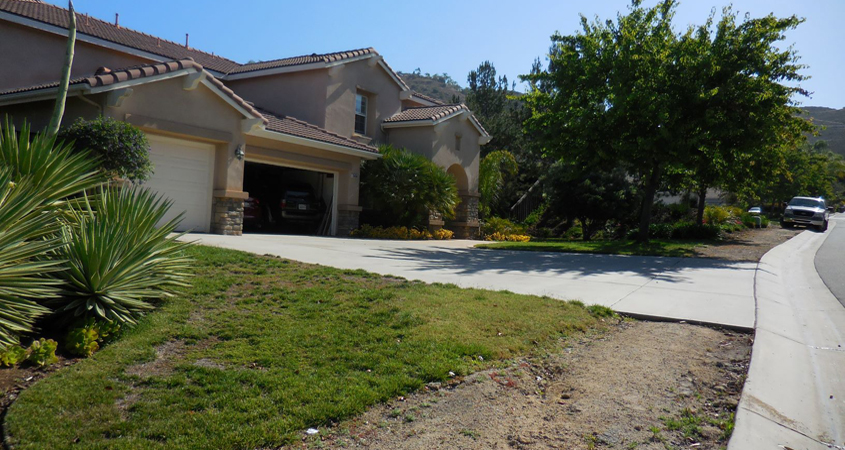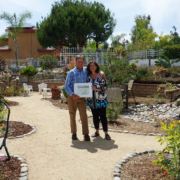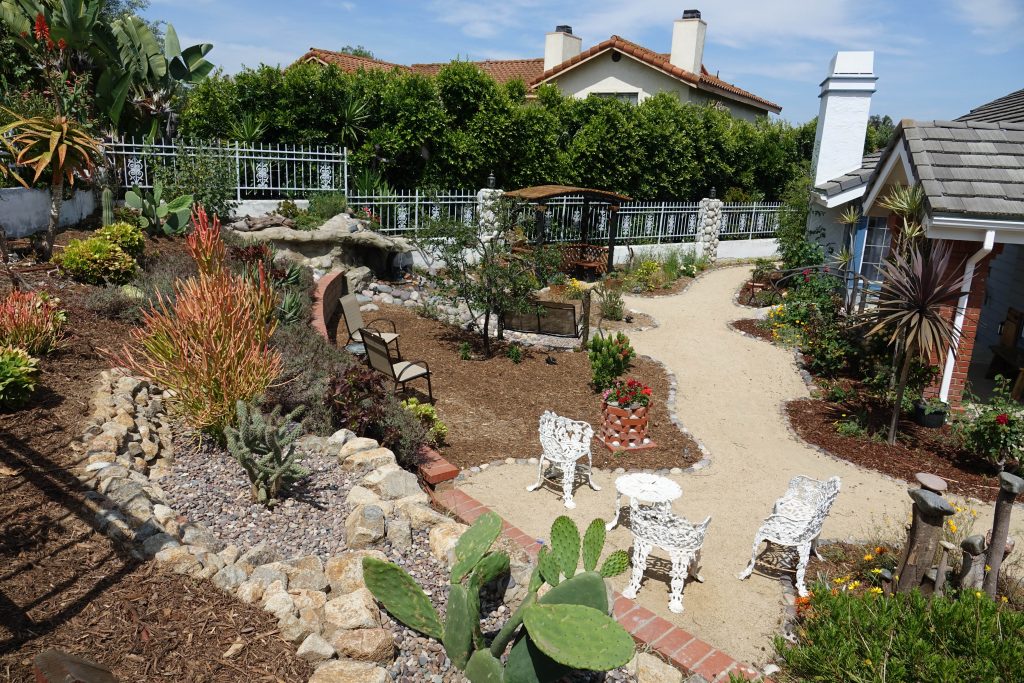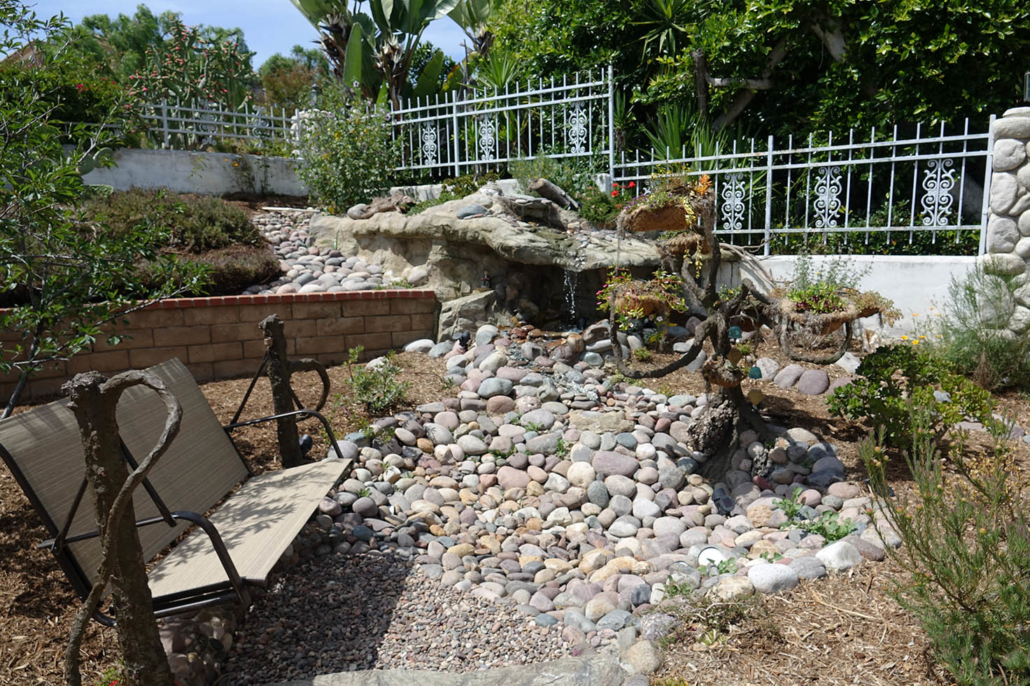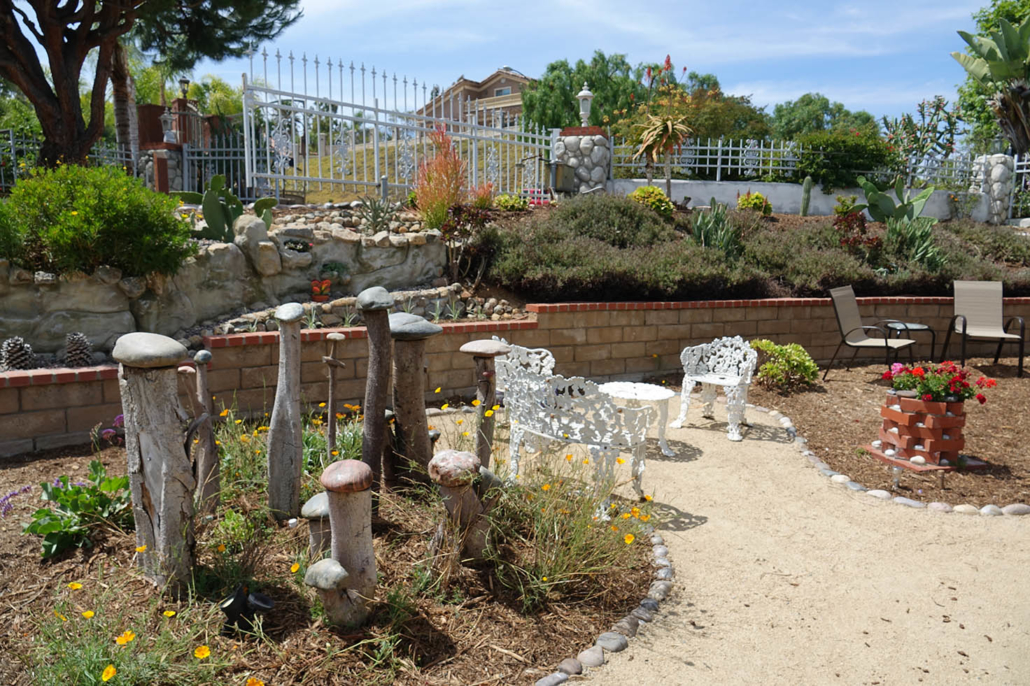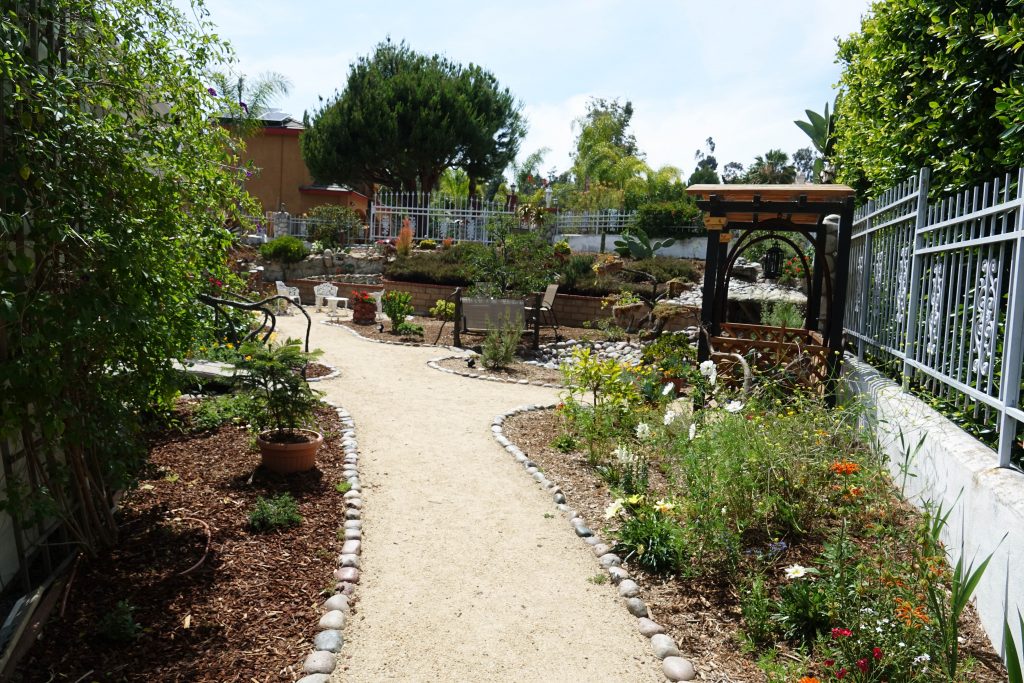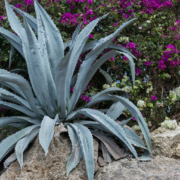Attract Butterflies and Hummingbirds
Witnessing the quick burst of color that often accompanies a butterfly or hummingbird’s flight is always exciting. It’s even more exciting when you see them in your own garden. Aside from being visually appealing, butterflies and hummingbirds also provide a service to your landscape by helping to pollinate plants. In doing so, they ensure seeds for future generations of plants.
How do you attract these beautiful garden pollinators?
Colorful, tube-shaped flowers located in sunny areas will attract hummingbirds in search of nectar. In Southern California, these tiny pollinators can stay year-round with a steady food supply. To provide this supply, try selecting a variety of plants that will bloom at different intervals throughout the year.
Hummingbirds also like shrubs and trees that provide shade where they can rest or find materials to build nests. Those cool areas are also where they can hunt insects. This can be helpful to your garden as they may eat insects harmful to other plants.
Similarly, butterflies also rely on flowers that provide nectar. They need host plants, which California native plants often are, where they can lay eggs. These eggs will hatch caterpillars, which will need to feed on nearby leaves. If you are concerned about leaves with lots of holes from hungry caterpillars, try strategically placing these plants behind other plants or in the back of your garden.
A good way to plan out where to put certain plants is by mirroring native plant communities.
Some native California plants that attract butterflies and hummingbirds:
- California Fuchsia
- Manzanitas
- Chaparral Currant
- Narrowleaf Milkweed
- Sticky Monkeyflower
- Coyote Mint
By selecting the right types of native plants, your landscape will burst into color!
The Water Authority and its partners also offer other great resources for landscaping upgrades, including tips for sustainable landscaping best practices at SustainableLandscapesSD.org and free WaterSmart classes at WaterSmartSD.org.

